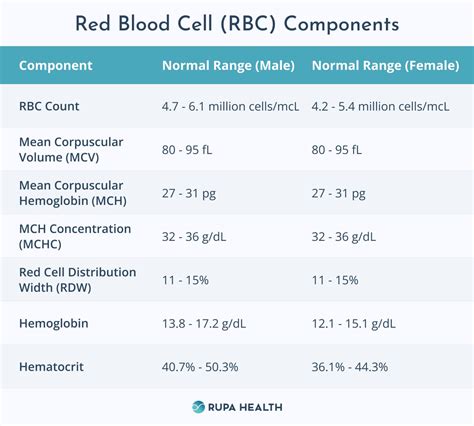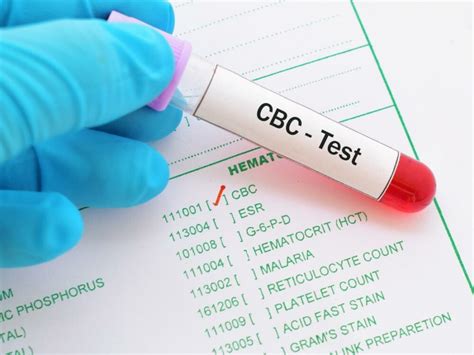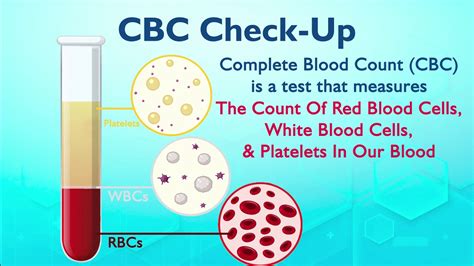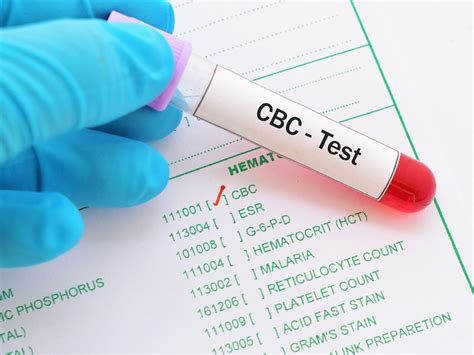Intro
Unlock the secrets of your blood with our comprehensive Blood CBC Differential Test Guide, covering complete blood count, differential count, and related lab tests, to help diagnose conditions like anemia, infection, and inflammation.
The Complete Blood Count (CBC) with differential test is a crucial diagnostic tool used in the medical field to evaluate various components of the blood. This test provides valuable information about the overall health of an individual, helping doctors diagnose and monitor a wide range of conditions, from anemia and infection to cancer and blood disorders. The importance of this test lies in its ability to detect abnormalities in the blood, which can be indicative of underlying health issues. As such, understanding the CBC differential test is essential for both medical professionals and individuals seeking to take an active role in their health care.
The CBC differential test is a comprehensive test that measures different components of the blood, including red blood cells, white blood cells, platelets, and hemoglobin. Each of these components plays a vital role in maintaining the body's overall health. Red blood cells, for example, are responsible for carrying oxygen throughout the body, while white blood cells are a key part of the immune system, fighting off infections and diseases. Platelets, on the other hand, are crucial for blood clotting, preventing excessive bleeding when an injury occurs. The differential part of the test specifically looks at the different types of white blood cells present in the blood, providing insights into the body's immune response and potential infections.
Understanding the results of a CBC differential test can seem daunting, given the array of values and terms used in the report. However, with a basic understanding of what each component measures and what the normal ranges are, individuals can better comprehend their health status. For instance, a high white blood cell count can indicate the presence of an infection or inflammation, while a low count can suggest a weakened immune system. Similarly, abnormalities in red blood cell or platelet counts can point to conditions such as anemia, bleeding disorders, or bone marrow problems. The test's ability to provide a detailed snapshot of the blood's cellular composition makes it an invaluable tool in clinical practice.
Introduction to CBC Differential Test

The CBC differential test is performed using a blood sample, typically drawn from a vein in the arm. The sample is then analyzed in a laboratory, where various parameters are measured. The test includes several components, each providing unique information about the blood. The differential count, a critical part of the CBC, categorizes white blood cells into different types, including neutrophils, lymphocytes, monocytes, eosinophils, and basophils. Each type of white blood cell has specific functions, ranging from fighting bacterial infections to playing roles in allergic reactions and immune responses.
Components of CBC Differential Test
The components of the CBC differential test can be broadly categorized into several key areas: - **Red Blood Cell (RBC) Count:** Measures the number of red blood cells in the blood, crucial for diagnosing conditions like anemia. - **White Blood Cell (WBC) Count:** Indicates the total number of white blood cells, helping to identify infections or immune system disorders. - **Platelet Count:** Assesses the number of platelets, vital for evaluating bleeding and clotting disorders. - **Hemoglobin (Hb) and Hematocrit (Hct):** Respectively measure the amount of hemoglobin and the proportion of red blood cells in the blood, important for diagnosing anemia and other conditions. - **Differential Count:** Breaks down the types of white blood cells, aiding in the diagnosis of specific infections or conditions.Understanding CBC Differential Test Results

Interpreting the results of a CBC differential test requires an understanding of the normal ranges for each component. These ranges can slightly vary between laboratories but generally fall within specific values. For example, a normal white blood cell count typically ranges from 4,000 to 11,000 cells per microliter of blood. Abnormal results, such as a high or low count, can indicate various health issues. It's crucial for individuals to discuss their test results with a healthcare provider, as the provider can offer insights into what the results mean in the context of the individual's overall health and medical history.
Normal and Abnormal Results
- **Normal Results:** Generally indicate good health, but it's essential to consider these results in conjunction with other health parameters and medical history. - **Abnormal Results:** Can signify a range of health issues, from mild conditions like dehydration to more severe diseases such as leukemia or severe infections.Preparation and Procedure

Preparing for a CBC differential test is relatively straightforward. Individuals are usually advised to fast for a certain period before the test, though this may not always be required. It's also recommended to avoid alcohol and strenuous exercise for a day before the test. On the day of the test, the individual will have a blood sample drawn, a process that typically takes only a few minutes. The blood is then sent to a laboratory for analysis, with results usually available within a day or two.
Steps Involved in the Test
1. **Blood Sample Collection:** A healthcare professional will clean the area where the blood will be drawn, usually the inside of the elbow, and then insert a needle into a vein to collect the blood sample. 2. **Sample Analysis:** The collected blood sample is sent to a laboratory where it is analyzed using specialized equipment. 3. **Result Interpretation:** The analyzed results are then interpreted by healthcare professionals, who look for any abnormalities that could indicate health issues.Benefits and Risks

The CBC differential test offers numerous benefits, primarily due to its comprehensive nature and the wealth of information it provides about the blood's cellular components. It is a valuable tool for diagnosing and monitoring a wide range of health conditions, allowing for early intervention and treatment. However, like any medical test, there are potential risks and considerations, such as bruising or bleeding at the needle site, though these are generally minor and temporary.
Advantages of the Test
- **Comprehensive Health Overview:** Provides a detailed snapshot of the blood's cellular composition. - **Early Detection of Health Issues:** Can identify abnormalities indicative of underlying health problems. - **Monitoring of Ongoing Conditions:** Useful for tracking the progression of known health issues and the effectiveness of treatments.Common Conditions Diagnosed

The CBC differential test is instrumental in diagnosing and monitoring a variety of health conditions. For instance, it can help identify anemia by showing low red blood cell counts or hemoglobin levels. Infections can be indicated by elevated white blood cell counts, while bleeding disorders might be suggested by low platelet counts. The test is also crucial in the diagnosis and monitoring of more severe conditions like leukemia, where abnormal white blood cell counts are a key indicator.
Examples of Diagnosable Conditions
- **Anemia:** Characterized by low red blood cell count or hemoglobin level. - **Infections:** Often indicated by an elevated white blood cell count. - **Bleeding Disorders:** May be suggested by a low platelet count. - **Leukemia:** Diagnosed and monitored through the identification of abnormal white blood cells.Future Directions and Advances

The field of CBC differential testing is continuously evolving, with advances in technology and medical science leading to more accurate and detailed tests. Automated analyzers, for example, have significantly improved the speed and precision of blood analysis. Furthermore, research into new biomarkers and cellular components is expanding the test's diagnostic capabilities, potentially allowing for the earlier detection of diseases and more personalized treatment approaches.
Emerging Trends and Technologies
- **Automated Analysis:** Enhances the speed and accuracy of test results. - **Biomarker Research:** Aims to identify new indicators of health and disease. - **Personalized Medicine:** Tailors treatment approaches to individual health profiles and genetic information.Conclusion and Next Steps

In conclusion, the CBC differential test is a powerful diagnostic tool that offers insights into the body's overall health. By understanding the components of the test and what the results signify, individuals can take a more proactive approach to their health. Whether used for routine check-ups or to diagnose and monitor specific conditions, the CBC differential test plays a vital role in modern healthcare. As medical science continues to advance, the capabilities and applications of this test will undoubtedly expand, leading to better health outcomes for individuals worldwide.
What is a CBC differential test used for?
+The CBC differential test is used to evaluate various components of the blood, providing insights into the body's overall health and helping diagnose a range of conditions, from anemia and infections to cancer and blood disorders.
How do I prepare for a CBC differential test?
+Preparation typically involves fasting for a certain period before the test and avoiding alcohol and strenuous exercise. It's also important to follow any specific instructions provided by your healthcare provider.
What do abnormal CBC differential test results indicate?
+Abnormal results can indicate a variety of health issues, depending on which components of the blood are affected. For example, a high white blood cell count can suggest an infection, while a low red blood cell count may indicate anemia.
We hope this comprehensive guide to the CBC differential test has been informative and helpful. If you have any further questions or would like to share your experiences with CBC testing, please don't hesitate to comment below. Your input can help others better understand the importance and implications of this diagnostic tool. Additionally, if you found this article useful, consider sharing it with others who might benefit from this information. Together, we can promote health awareness and support each other in our journeys towards wellness.
